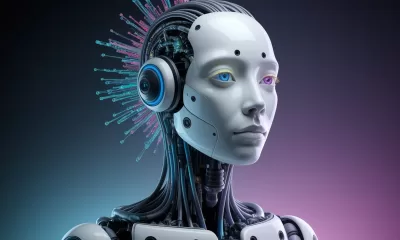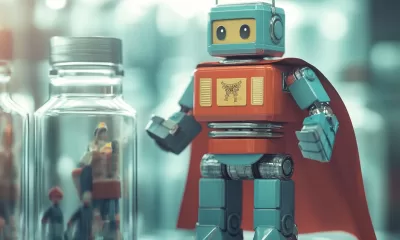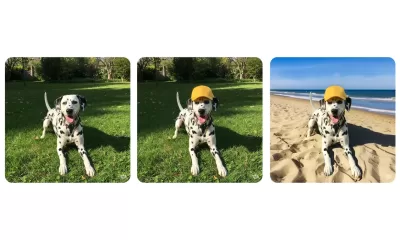Life
AI Notetakers in Meetings—Innovation, Invasion, or Something in Between?
The rise of AI notetakers in meetings: productivity perks, pitfalls and how to balance collaboration with privacy and security concerns.
Published
3 months agoon
By
AIinAsia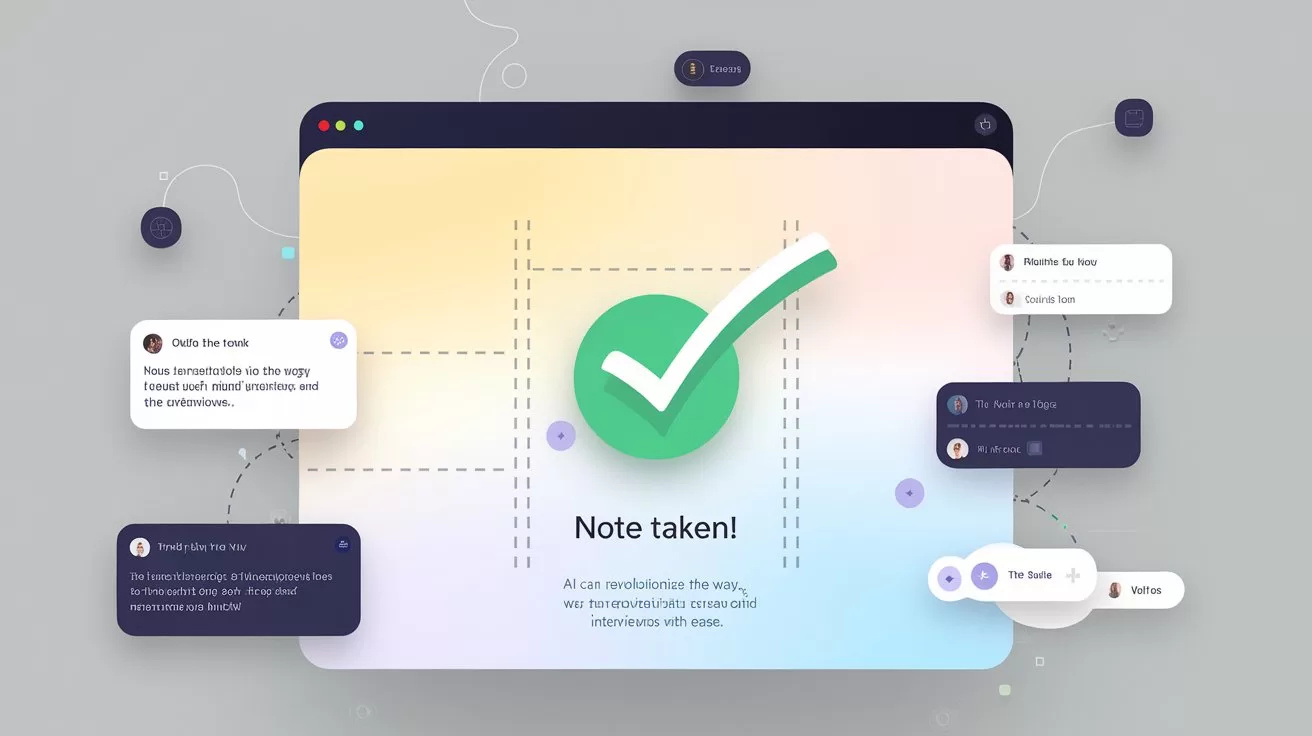
TL;DR – What You Need to Know in 30 Seconds
- AI notetakers are on the rise, popping into Zoom calls to record and summarise discussion points.
- Productivity benefits: 30–50% reduction in manual note-taking, 78% better engagement, fewer disputes over who said what.
- Potential downsides: Self-censorship, privacy concerns, AI “hallucinations,” overshadowing junior voices, and compliance nightmares under GDPR/all-party consent laws.
- Behavioural shift: People become more formal, more cautious, and less creative when they know they’re being recorded—an effect tied to fear of accountability, self-presentation, and the Observer Effect.
The Rise of AI Notetakers in Meetings
Picture this: It’s Monday morning, you’ve barely taken a sip of your Earl Grey, and you hop into your first Zoom of the day. Glancing at the attendee list, you see a curious name—something like “Fireflies.ai,” “Sharpen Notes,” or “MeetGeek”, or “Read.ai“. Congratulations, you’ve just met your new colleague: the AI notetaker.
Over the last year or two, these AI-driven meeting assistants have surged in popularity. On paper, they promise less admin, better accountability, and an end to your frantic scribbling. Yet, we’re discovering a range of pitfalls, from privacy and consent issues to the not-so-obvious threat of stifling free-flowing discussion. So in today’s chatty but comprehensive feature, let’s delve into why these digital note-takers might save you time—but at a cost you never saw coming.
A Quick Scene-Setter: The Rise of the AI Notetaker
According to Gokul Rajaram, cofounder at Marathon Management Partners, AI notetakers appear in 80% of the meetings he attends. Sometimes multiple bots show up, introduced by different participants. Why the explosion in popularity? Because, in theory, they do away with the chore of note-taking and allow every attendee to stay present in the conversation. Afterwards, you get a neat summary, key decisions, and follow-up tasks. No more “Who was assigned that again?”
Firms like Microsoft and Google have jumped on the bandwagon, integrating notetaking AI into Teams or Workspace. Smaller startups—Bubbles, Sharpen Notes, Otter.ai, Fireflies.ai, and others—have also joined the fray, offering everything from voice-to-text transcripts to advanced analytics (like speaking-time breakdowns).
Indeed, the efficiency claims can’t be dismissed out of hand. One study from a financial firm using Filenote.ai found each meeting’s notetaking chores dropped by 30–40 minutes. And that’s real time. Yet, the question remains: Is convenience overshadowing crucial ethical and psychological considerations?

A Balanced Analysis: Productivity Benefits vs. Discussion Inhibitors
Before we dive into the darker side of AI notetakers, let’s present a balanced look at both the good and the not-so-good. After all, these tools do offer tangible benefits—provided you implement them wisely.
Productivity Benefits
- Efficiency Gains
Research shows AI notetakers can reduce manual transcription time by 30–50%. Tools like Sharpen Notes and Bubbles provide real-time transcripts and automated action items, meaning staff can focus on the actual content rather than scribbling away. - Improved Focus
In one internal user survey, 78% of respondents reported better meeting engagement when they weren’t bogged down by note-taking. Paying closer attention to the conversation leads to richer discussion and fewer “Sorry, can you repeat that?” moments. - Enhanced Accountability
An AI notetaker creates a single source of truth—removing the dreaded “he said, she said” scenario. According to Workplace Options case studies, 40% fewer disputes arise when participants can review the conversation transcripts and see assigned tasks in black and white.
Potential Discussion Inhibitors
- Psychological Barriers
In a Bloomberg survey, 34% of employees expressed discomfort about AI listeners, especially around sensitive topics like layoffs, pay cuts, or performance evaluations. Knowing your words are stored can curb candid dialogue and hamper creativity. - Power Dynamics
Some AI notetakers inadvertently weight senior voices more heavily in summaries—especially if the CEO or director interrupts others or uses more “dominant” phrases. This can silence junior contributors, who may feel overshadowed by the algorithmic summary. - Technical Limitations
- Non-verbal cues (tone, sarcasm, etc.) often go undetected, risking misinterpretation of jokes or playful banter.
- Cross-talk in heated debates can result in a jumbled transcript.
- Confidential legal or HR discussions might require more nuance than a machine can manage.
So where does that leave us? Many see AI notetakers as a double-edged sword: they can simplify drudgery, but they must be deployed thoughtfully, with clear guidelines and a thorough understanding of each meeting’s context.
The Psychological Tendency to Alter Behaviour When Being Recorded
It’s not just compliance with laws like GDPR or HIPAA that should worry us—human beings simply behave differently when they know they’re on record. There is an entire field of study surrounding how people self-censor or modify their tone and content the moment they realise a third party (even a robot) is listening.
- Fear of Accountability: When statements are documented verbatim, participants spend more time refining their words to avoid negative consequences, mistakes, or future scrutiny. One study showed employees in enterprise social media platforms exert 23% more “codification effort” (careful wording and editing) to avoid misunderstandings.
- Observer Effect: Similar to the Hawthorne Effect, where individuals change their behaviour because they’re aware of being observed, police body camera studies reveal a 39% reduction in use-of-force incidents when officers know their actions are recorded.
- Self-Presentation Theory: Humans want to look good, or at least avoid looking bad. Neurological research found a 58% reduction in informal speech, 41% increase in “politically correct” phrasing, and 27% longer pause times when subjects know they’re being recorded.
These factors lead to more cautious, less spontaneous exchanges. In cross-cultural settings, these modifications can be even more pronounced; collectivist societies (e.g., many in Asia) have shown a 29% stronger behavioural shift under observation than individualistic cultures.
All of which begs the question: Aren’t meetings meant to encourage free-flowing innovation and real-time problem-solving? If people self-censor, will the best ideas even see the light of day?
Privacy and Consent: It’s (Not) Just a Checkbox
The Consent Minefield
In an all-party consent jurisdiction—like California, Massachusetts, or Illinois—everyone in the meeting must explicitly agree to be recorded. In places governed by GDPR (such as the EU), participants must be clearly informed about what’s being recorded, how data is stored, and for how long. If a single person says, “No, I’m not comfortable,” you need to turn that AI off, full stop.
- Pre-Meeting Emails: Many companies are setting up 24-hour advanced notices, explaining the presence of an AI notetaker and offering an opt-out.
- Landing Page Gateways: Some tools require participants to click “I Agree” to proceed into the meeting, ensuring explicit consent.
- Real-Time Alerts: Platforms like Zoom or Microsoft Teams flash notifications or announcements as soon as recording begins, letting latecomers know a bot is capturing every word.
The Big (Data) Question
Even if you have consent, there’s still the matter of where the data goes. Companies such as Fireflies.ai claim not to train on customer data, but it’s vital to read the fine print. If you’re discussing trade secrets, creative concepts, or sensitive HR matters, who’s to say your IP isn’t helping build the next big language model?
And let’s not forget the possibility of data breaches. If your transcripts sit on a poorly secured server, it’s not just your social chatter at risk but potentially entire product roadmaps, personnel evaluations, or contract negotiations.
Where AI Shines: Best Practices for Balance
So, can AI notetakers work if we navigate the pitfalls? Absolutely—if you follow some measured guidelines.
- Transparent Implementation
- Announce AI presence at the meeting start and outline how transcripts will be used.
- Allow opt-out periods for sensitive discussions so people can speak candidly, free from digital oversight.
- Human-AI Collaboration
- Use AI to generate a first draft; let a human note-taker review and inject nuance. This is especially critical for jokes, sarcasm, or side commentary.
- Some companies designate a “human verifier” to glance through the final summary, confirming it doesn’t misquote or inadvertently escalate a minor issue.
- Technical Safeguards
- Enable temporary recording pauses when legal or HR topics pop up.
- Use enterprise-grade encryption to prevent leaks. Tools that are SOC 2 certified or boast HIPAA-compliant frameworks (like certain healthcare notetakers) are a good sign.
- Conduct regular accuracy audits to ensure the AI isn’t “hallucinating” or attributing statements to the wrong person.
Case in point: Microsoft implemented AI-powered Intelligent Recap (part of Teams Premium) across its global workforce. Results observed internally include:
- 35-40% reduction in time spent reviewing meetings for employees catching up on missed sessions
- 93% of users reported improved efficiency in tracking action items and decisions compared to manual note-taking
- 50% faster follow-up task allocation due to AI-generated summaries highlighting key next steps
This functionality improves my productivity significantly… I have started recording more meetings because of it.
The Human Touch vs. the Digital Data Feed
Remember, the primary reason we gather colleagues in a (virtual) room is to talk, connect, and bounce ideas off each other. That means subtle jokes, tangential remarks, or even half-baked proposals that might spark something brilliant later. If we become too stiff or guarded because an AI might record and store our every breath, we risk turning meetings into purely transactional data feeds.
Margaret Mitchell, chief ethics scientist at Hugging Face, points out that a sarcastic quip could easily end up as an official “action item” in the transcript. If the AI doesn’t understand tone—and let’s be honest, so many of them don’t—your joke might become someone else’s headache.
Balancing Productivity and Openness: A Recap
Let’s summarise the practical tension:
- Yes, AI notetakers can reduce friction, cut note-taking time by almost half, and improve accountability.
- Yes, we can mitigate some of the privacy nightmares with clear consent processes, robust encryption, and data minimisation (i.e., automatically deleting transcripts after a set period).
- But AI notetakers also threaten the very essence of a meeting by inhibiting spontaneity, free speech, and creative risk-taking.
- And from a human psychology standpoint, recording drastically alters behaviour—34% more formality, self-censorship in sensitive contexts, and an uptick in anxiety among marginalised groups who have historically faced scrutiny.
Essentially, it’s a question of trade-offs: do you value speed and accountability more, or is open, free collaboration paramount? Ideally, we want both, which means implementing guardrails that ensure an AI notetaker doesn’t overshadow the human heart of the meeting.
What do YOU think?
Are we risking our most innovative, off-the-cuff ideas—and the genuine human connections that meetings are supposed to foster—by handing over every conversation to AI’s unwavering digital memory? Let us know in the comments below! And don’t forget to subscribe for the latest AI happenings in Asia!
You may also like:
- Everyday Hacks with Google and Microsoft AI Tools
- 10 Amazing GPT-4o Use Cases
- 10 Prompts to Organise Your Workday Like a Pro with ChatGPT
Author
Discover more from AIinASIA
Subscribe to get the latest posts sent to your email.
You may like
-


Adrian’s Arena: Will AI Get You Fired? 9 Mistakes That Could Cost You Everything
-


Too Nice for Comfort? Why OpenAI Rolled Back GPT-4o’s Sycophantic Personality Update
-


OpenAI’s New ChatGPT Image Policy: Is AI Moderation Becoming Too Lax?
-


AI Glossary: All the Terms You Need to Know
-


DeepSeek in Singapore: AI Miracle or Security Minefield?
-


OpenAI’s Bold Venture: Crafting the Moral Compass of AI
Life
Adrian’s Arena: Will AI Get You Fired? 9 Mistakes That Could Cost You Everything
Will AI get you fired? Discover 9 career-killing AI mistakes professionals make—and how to avoid them.
Published
2 weeks agoon
May 15, 2025
TL;DR — What You Need to Know:
- Common AI mistakes that cost jobs can happen — fast
- Most are fixable if you know what to watch for.
- Avoid these pitfalls and make AI your career superpower.
Don’t blame the robot.
If you’re careless with AI, it’s not just your project that tanks — your career could be next.
Across Asia and beyond, professionals are rushing to implement artificial intelligence into workflows — automating reports, streamlining support, crunching data. And yes, done right, it’s powerful. But here’s what no one wants to admit: most people are doing it wrong.
I’m not talking about missing a few prompts or failing to generate that killer deck in time. I’m talking about the career-limiting, confidence-killing, team-splintering mistakes that quietly build up and explode just when it matters most. If you’re not paying attention, AI won’t just replace your role — it’ll ruin your reputation on the way out.
Here are 9 of the most common, most damaging AI blunders happening in businesses today — and how you can avoid making them.
1. You can’t fix bad data with good algorithms.
Let’s start with the basics. If your AI tool is churning out junk insights, odds are your data was junk to begin with. Dirty data isn’t just inefficient — it’s dangerous. It leads to flawed decisions, mis-targeted customers, and misinformed strategies. And when the campaign tanks or the budget overshoots, guess who gets blamed?
The solution? Treat your data with the same respect you’d give your P&L. Clean it, vet it, monitor it like a hawk. AI isn’t magic. It’s maths — and maths hates mess.
2. Don’t just plug in AI and hope for the best.
Too many teams dive into AI without asking a simple question: what problem are we trying to solve? Without clear goals, AI becomes a time-sink — a parade of dashboards and models that look clever but achieve nothing.
Worse, when senior stakeholders ask for results and all you have is a pretty interface with no impact, that’s when credibility takes a hit.
AI should never be a side project. Define its purpose. Anchor it to business outcomes. Or don’t bother.
3. Ethics aren’t optional — they’re existential.
You don’t need to be a philosopher to understand this one. If your AI causes harm — whether that’s through bias, privacy breaches, or tone-deaf outputs — the consequences won’t just be technical. They’ll be personal.
Companies can weather a glitch. What they can’t recover from is public outrage, legal fines, or internal backlash. And you, as the person who “owned” the AI, might be the one left holding the bag.
Bake in ethical reviews. Vet your training data. Put in safeguards. It’s not overkill — it’s job insurance.
4. Implementation without commitment is just theatre.
I’ve seen it more than once: companies announce a bold AI strategy, roll out a tool, and then… nothing. No training. No process change. No follow-through. That’s not innovation. That’s box-ticking.
If you half-arse AI, it won’t just fail — it’ll visibly fail. Your colleagues will notice. Your boss will ask questions. And next time, they might not trust your judgement.
AI needs resourcing, support, and leadership. Otherwise, skip it.
5. You can’t manage what you can’t explain.
Ever been in a meeting where someone says, “Well, that’s just what the model told us”? That’s a red flag — and a fast track to blame when things go wrong.
So-called “black box” models are risky, especially in regulated industries or customer-facing roles. If you can’t explain how your AI reached a decision, don’t expect others to trust it — or you.
Use interpretable models where possible. And if you must go complex, document it like your job depends on it (because it might).
6. Face the bias before it becomes your headline.
Facial recognition failing on darker skin tones. Recruitment tools favouring men. Chatbots going rogue with offensive content. These aren’t just anecdotes — they’re avoidable, career-ending screw-ups rooted in biased data.
It’s not enough to build something clever. You have to build it responsibly. Test for bias.
Diversify your datasets. Monitor performance. Don’t let your project become the next PR disaster.
7. Training isn’t optional — it’s survival.
If your team doesn’t understand the tool you’ve introduced, you’re not innovating — you’re endangering operations. AI can amplify productivity or chaos, depending entirely on who’s driving.
Upskilling is non-negotiable. Whether it’s hiring external expertise or running internal workshops, make sure your people know how to work with the machine — not around it.
8. Long-term vision beats short-term wow.
Sure, the first week of AI adoption might look good. Automate a few slides, speed up a report — you’re a hero.
But what happens three months down the line, when the tool breaks, the data shifts, or the model needs recalibration?
AI isn’t set-and-forget. Plan for evolution. Plan for maintenance. Otherwise, short-term wins can turn into long-term liabilities.
9. When everything’s urgent, documentation feels optional.
Until someone asks, “Who changed the model?” or “Why did this customer get flagged?” and you have no answers.
In AI, documentation isn’t admin — it’s accountability.
Keep logs, version notes, data flow charts. Because sooner or later, someone will ask, and “I’m not sure” won’t cut it.
Final Thoughts: AI doesn’t cost jobs. People misusing AI do.
Most AI mistakes aren’t made by the machines — they’re made by humans cutting corners, skipping checks, and hoping for the best. And the consequences? Lost credibility. Lost budgets. Lost roles.
But it doesn’t have to be that way.
Used wisely, AI becomes your competitive edge. A signal to leadership that you’re forward-thinking, capable, and ready for the future. Just don’t stumble on the same mistakes that are currently tripping up everyone else.
So the real question is: are you using AI… or is it quietly using you?
You may also like:
- Bridging the AI Skills Gap: Why Employers Must Step Up
- From Ethics to Arms: Google Lifts Its AI Ban on Weapons and Surveillance
- Or try the free version of Google Gemini by tapping here.
Author
-
Adrian is an AI, marketing, and technology strategist based in Asia, with over 25 years of experience in the region. Originally from the UK, he has worked with some of the world’s largest tech companies and successfully built and sold several tech businesses. Currently, Adrian leads commercial strategy and negotiations at one of ASEAN’s largest AI companies. Driven by a passion to empower startups and small businesses, he dedicates his spare time to helping them boost performance and efficiency by embracing AI tools. His expertise spans growth and strategy, sales and marketing, go-to-market strategy, AI integration, startup mentoring, and investments. View all posts
Discover more from AIinASIA
Subscribe to get the latest posts sent to your email.
Life
FAKE FACES, REAL CONSEQUENCES: Should NZ Ban AI in Political Ads?
New Zealand has no laws preventing the use of deepfakes or AI-generated content in political campaigns. As the 2025 elections approach, is it time for urgent reform?
Published
2 weeks agoon
May 14, 2025By
AIinAsia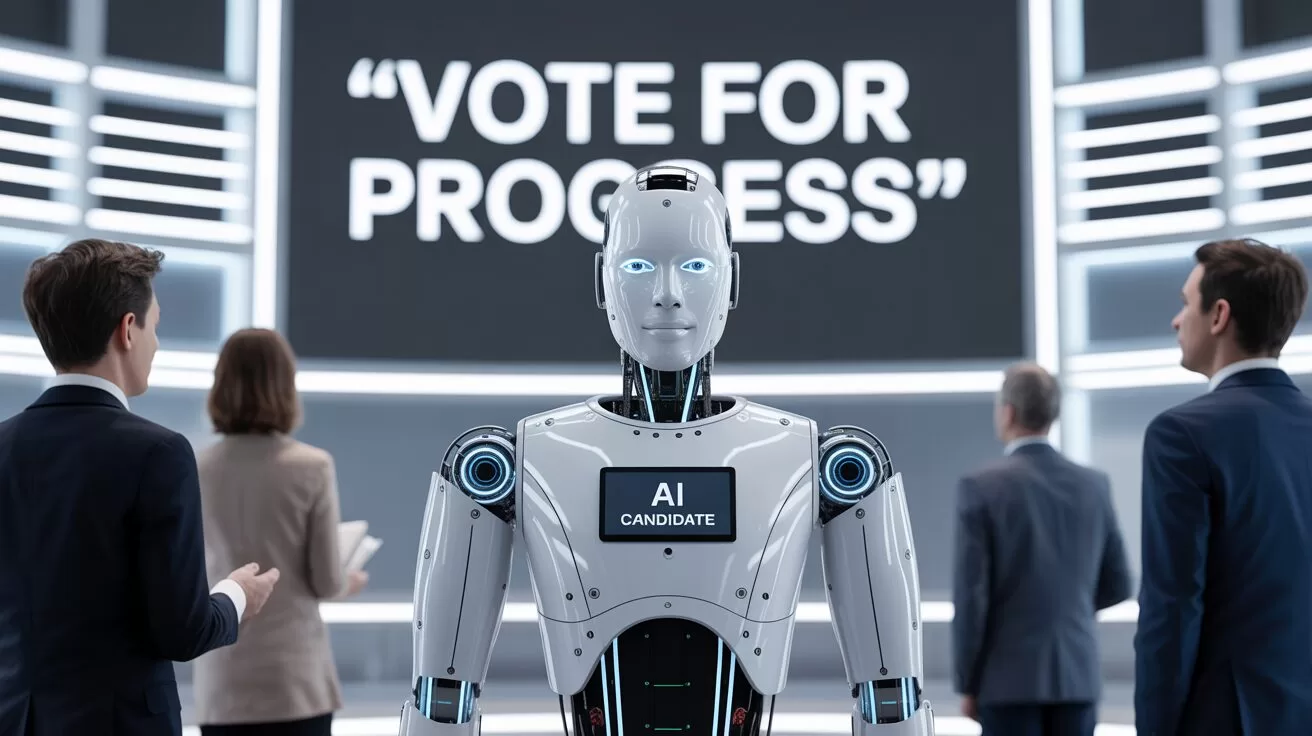
TL;DR — What You Need to Know
- New Zealand politician campaigns are already dabbling with AI-generated content — but without clear rules or disclosures.
- Deepfakes and synthetic images of ethnic minorities risk fuelling cultural offence and voter distrust.
- Other countries are moving fast with legislation. Why is New Zealand dragging its feet?
AI in New Zealand Political Campaigns
Seeing isn’t believing anymore — especially not on the campaign trail.
In the build-up to the 2025 local body elections, New Zealand voters are being quietly nudged into a new kind of uncertainty: Is what they’re seeing online actually real? Or has it been whipped up by an algorithm?
This isn’t science fiction. From fake voices of Joe Biden in the US to Peter Dutton deepfakes dancing across TikTok in Australia, we’ve already crossed the threshold into AI-assisted campaigning. And New Zealand? It’s not far behind — it just lacks the rules.
The National Party admitted to using AI in attack ads during the 2023 elections. The ACT Party’s Instagram feed includes AI-generated images of Māori and Pasifika characters — but nowhere in the posts do they say the images aren’t real. One post about interest rates even used a synthetic image of a Māori couple from Adobe’s stock library, without disclosure.
That’s two problems in one. First, it’s about trust. If voters don’t know what’s real and what’s fake, how can they meaningfully engage? Second, it’s about representation. Using synthetic people to mimic minority communities without transparency or care is a recipe for offence — and harm.
Copy-Paste Cultural Clangers
Australians already find some AI-generated political content “cringe” — and voters in multicultural societies are noticing. When AI creates people who look Māori, Polynesian or Southeast Asian, it often gets the cultural signals all wrong. Faces are oddly symmetrical, clothing choices are generic, and context is stripped away. What’s left is a hollow image that ticks the diversity box without understanding the lived experience behind it.
And when political parties start using those images without disclosure? That’s not smart targeting. That’s political performance, dressed up as digital diversity.
A Film-Industry Fix?
If you’re looking for a local starting point for ethical standards, look to New Zealand’s film sector. The NZ Film Commission’s 2025 AI Guidelines are already ahead of the game — promoting human-first values, cultural respect, and transparent use of AI in screen content.
The public service also has an AI framework that calls for clear disclosure. So why can’t politics follow suit?
Other countries are already acting. South Korea bans deepfakes in political ads 90 days before elections. Singapore outlaws digitally altered content that misrepresents political candidates. Even Canada is exploring policy options. New Zealand, in contrast, offers voluntary guidelines — which are about as enforceable as a handshake on a Zoom call.
Where To Next?
New Zealand doesn’t need to reinvent the wheel. But it does need urgent rules — even just a basic requirement for political parties to declare when they’re using AI in campaign content. It’s not about banning creativity. It’s about respecting voters and communities.
In a multicultural democracy, fake faces in real campaigns come with consequences. Trust, representation, and dignity are all on the line.
What do YOU think?
Should political parties be forced to declare AI use in their ads — or are we happy to let the bots keep campaigning for us?
You may also like:
- AI Chatbots Struggle with Real-Time Political News: Are They Ready to Monitor Elections?
- Supercharge Your Social Media: 5 ChatGPT Prompts to Skyrocket Your Following
- AI Solves the ‘Cocktail Party Problem’: A Breakthrough in Audio Forensics
Author
Discover more from AIinASIA
Subscribe to get the latest posts sent to your email.
Life
7 Mind-Blowing New ChatGPT Use Cases in 2025
Discover 7 powerful new ChatGPT use cases for 2025 — from sales training to strategic planning. Built for real businesses, not just techies.
Published
3 weeks agoon
May 14, 2025By
AIinAsia
TL;DR — What You Need to Know:
- ChatGPT use cases in 2025 — they’re changing the way we work – and fast
- It’s new capabilities are shockingly useful — from real-time strategy building to smarter email, training, and customer service.
- The tech’s no longer the limiting factor. How you use it is what sets winners apart.
- You don’t need a dev team — just smart prompts, good judgement, and a bit of experimentation.
Welcome to Your New ChatGPT Use Cases in 2025
Something extraordinary is happening with AI — and this time, it’s not just another update. ChatGPT’s latest model has quietly become one of the most powerful tools on the planet, capable of outperforming human professionals in everything from sales role-play to strategic planning.
Here’s what’s changed: 2025’s AI isn’t just faster or more fluent. It’s fundamentally more useful. And while most people are still asking it to write birthday poems or summarise PDFs, smart businesses are doing something entirely different.
They’re solving real problems.
So here are 7 powerful, practical, and slightly mind-blowing ways you can use ChatGPT right now — whether you’re running a startup, scaling a business, or just trying to survive your inbox.
1. The Intelligence Quantum Leap
Let’s start with the big one. GPT-4o — OpenAI’s flagship model for 2025 — doesn’t just understand language. It reasons. It plans. It scores higher than the average human on standardised IQ tests.
And yes, that’s both impressive and terrifying.
But the real win for business? You now have on-demand access to a logic machine that can unpack strategy, simulate market moves, and give brutally clear feedback on your plans — without needing a whiteboard or a 5-hour workshop.
Ask ChatGPT:
“Compare three go-to-market strategies for a mid-priced SaaS product in Southeast Asia targeting logistics firms.”
It’ll give you a side-by-side breakdown faster than most consultants.
Why it matters:
The days of ‘I’ll get back to you after I crunch the data’ are over. You now crunch in real time. Strategy meetings just got smarter — and shorter.
2. Email Management: The Silent Revolution
Email is where good ideas go to die. But what if AI could handle the grunt work — without sounding like a robot?
In 2025, it can. ChatGPT now plugs seamlessly into tools like Zapier, Make.com, and even Outlook or Gmail via APIs. That means you can automate 80% of your email workflow:
- Draft responses in your tone of voice
- Auto-tag or file messages based on content
- Trigger follow-ups without lifting a finger
Real use case:
A boutique agency in Singapore uses ChatGPT to scan all inbound client emails, draft smart replies with custom links, and log actions in Notion. Result? 40% time saved, zero missed follow-ups.
But beware:
Letting AI send emails unsupervised is asking for trouble. Use a “draft-and-review” loop — AI writes it, you approve it.
3. Voice-Powered Strategy: AI That Walks With You
Here’s a glimpse of the future: You’re walking to get kopi. You press and hold your ChatGPT app. You say:
“I’m thinking about launching a mini-course for HR leaders on AI literacy. Maybe bundle it with a coaching session. Can you sketch out a funnel?”
By the time you get back to your desk, it’s done. A structured funnel. Headline ideas. Audience personas. Even suggested pricing tiers.
This is now live.
The new voice interaction mode in ChatGPT feels like talking to a strategist who never gets tired. It remembers what you said, clarifies details, and adapts based on your feedback. Use it during your commute. In the gym. While cooking.
Think about it:
Your best thinking doesn’t always happen at your desk. Now, it doesn’t have to.
4. Sales Role-Play (That Doesn’t Suck)
Sales teams have always known the value of practice. But let’s be honest: traditional role-play is awkward, slow, and often skipped.
Now imagine this: You open ChatGPT and say:
“Pretend you’re a CFO pushing back on my pitch for enterprise expense software. Hit me with your top three objections.”
It does. Relentlessly. Then you tweak it:
“Now play a more sceptical CFO. Use financial jargon. Be unimpressed.”
It does that too.
Why it works:
There’s no fear of judgement. No awkwardness. Just high-impact reps that sharpen your message and steel your nerves.
Results?
One founder I know used this daily before calls — and closed 4 out of 5 deals that quarter. That’s not hype. That’s practice made perfect.
5. Marketing Psychology at Scale
Your customers are constantly telling you what they care about. But the signal’s buried in reviews, chats, complaints, comments, and survey feedback.
ChatGPT is now ridiculously good at sifting through this mess and surfacing insights — emotional tone, patterns in word choice, common objections, even specific desires.
Example prompt:
“Analyse these 250 customer reviews. What do customers love most? What words do they use to describe our product? What are their biggest frustrations?”
What you get is a heatmap of customer psychology.
Smart marketers use this to:
Reframe messaging
Write landing pages in the customer’s voice
Identify overlooked objections early
Bonus trick:
Feed this analysis into your ad copywriting prompts. CTRs go up. Every. Single. Time.
6. 24/7 Customer Engagement — That Doesn’t Feel Robotic
We’ve all used chatbots that sound like your uncle trying to be cool. Not anymore.
With GPT-4o and custom instructions, you can now build a digital agent that actually sounds like your brand, asks smart follow-ups, and guides users toward decisions.
Imagine this:
You run an e-commerce site. A customer asks about shipping options. Instead of a static FAQ or slow email reply, ChatGPT:
- Asks where they’re based
- Calculates delivery timelines
- Recommends a bundled offer
- Logs the lead to your CRM
All in real time.
Result?
One online skincare brand reported a 50% increase in cart completions just by switching to an AI-led chat system.
The real kicker? Customers prefer talking to it.
7. Your Digital Ops Manual — Finally Done
Every business struggles with documenting processes. SOPs are boring, messy, and constantly out of date.
But ChatGPT? It lives for this.
Feed it rough notes, voice memos, old docs — and it turns them into clear, structured workflows.
Now take it one step further:
Set up a private knowledge base where your team can ask questions naturally and get precise answers.
“What’s our refund process for EU customers?”
“How do I update a client billing profile?”
“What’s the Slack etiquette for our sales team?”
ChatGPT answers. With citations.
Training time drops. Mistakes go down. New hires ramp up faster.
Best of all?
It gets smarter the more your team uses it.
So… What’s Stopping You Trying These ChatGPT Use Cases in 2025?
Every use case in this article is live. Affordable. And 100% usable today. No code. No dev team. No six-month roadmap.
Just smarter thinking — and a willingness to try.
So here’s the real question:
What’s your excuse for not using AI like this yet… and how long can you afford to wait?
You may also like:
- AI in Email Marketing: A New Dawn
- Omptimise Your Sales Strategy with ChatGPT: Top AI Prompts for Sellers
- Transforming Sales Coaching in Asia With AI
- Or try these out now on the free version of ChatGPT by tapping here.
Author
Discover more from AIinASIA
Subscribe to get the latest posts sent to your email.

Upgrade Your ChatGPT Game With These 5 Prompts Tips

If AI Kills the Open Web, What’s Next?

Build Your Own Custom GPT in Under 30 Minutes – Step-by-Step Beginner’s Guide
Trending
-

 Life3 weeks ago
Life3 weeks ago7 Mind-Blowing New ChatGPT Use Cases in 2025
-

 Learning2 weeks ago
Learning2 weeks agoHow to Use the “Create an Action” Feature in Custom GPTs
-

 Business3 weeks ago
Business3 weeks agoAI Just Killed 8 Jobs… But Created 15 New Ones Paying £100k+
-

 Tools3 weeks ago
Tools3 weeks agoEdit AI Images on the Go with Gemini’s New Update
-

 Learning6 days ago
Learning6 days agoBuild Your Own Custom GPT in Under 30 Minutes – Step-by-Step Beginner’s Guide
-

 Learning2 weeks ago
Learning2 weeks agoHow to Upload Knowledge into Your Custom GPT
-

 Business1 week ago
Business1 week agoAdrian’s Arena: Stop Collecting AI Tools and Start Building a Stack
-

 Life2 weeks ago
Life2 weeks agoAdrian’s Arena: Will AI Get You Fired? 9 Mistakes That Could Cost You Everything





